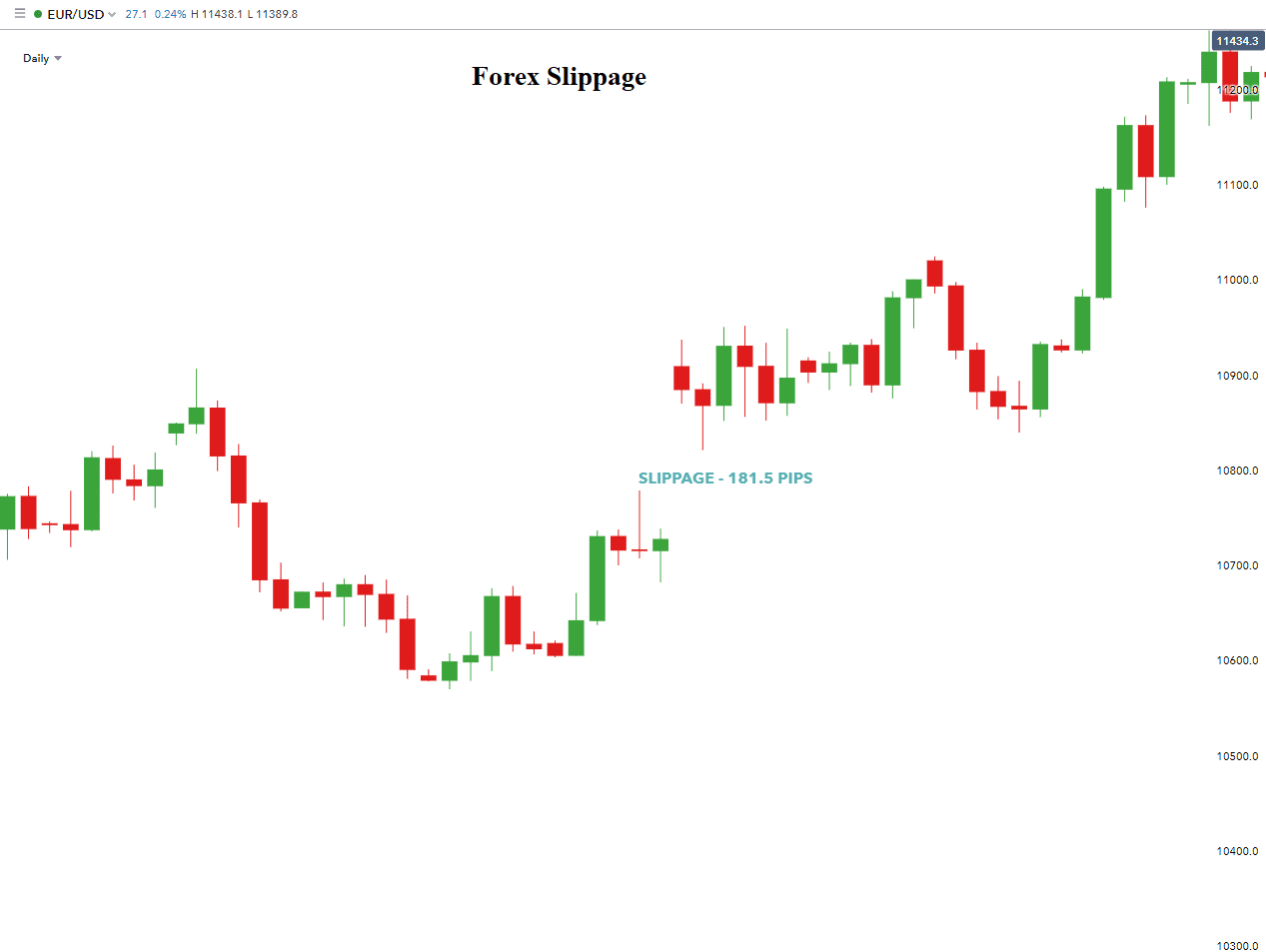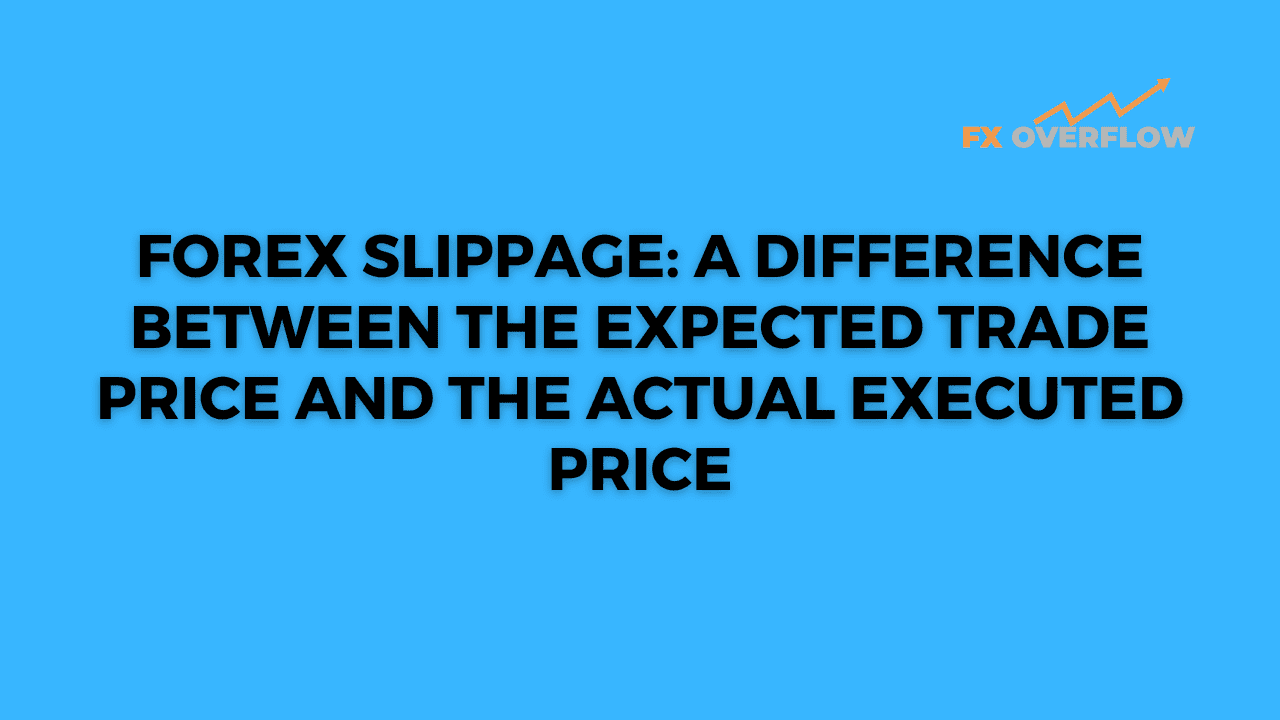Forex Slippage: A Difference Between the Expected Trade Price and the Actual Executed Price
In the fast-paced world of Forex trading, traders encounter various challenges. One such challenge is Forex slippage, which occurs when there is a discrepancy between the expected trade price and the price at which the trade is executed. Slippage can have a significant impact on trading outcomes, and understanding its causes and implications is essential for traders to make informed decisions.
Table Content
1. What is Forex Slippage?
2. The Impact of Forex Slippage
3. Causes of Forex Slippage
4. How to Minimize Forex Slippage?
5. Strategies for Dealing with Slippage
6. Expert Tips for Forex Trading
7. FAQs
8. Footnote
What is Forex Slippage?
Forex slippage is a common occurrence in the currency market, where the execution of a trade happens at a different price than the one anticipated by the trader. It is the result of a time delay between order placement and execution, volatile market conditions, and liquidity issues.

The Impact of Forex Slippage
Forex slippage can have both positive and negative effects on traders. While it can lead to unexpected losses, it can also result in favorable outcomes, especially when the slippage works in favor of the trader. Understanding the impact of slippage is vital for devising effective risk management strategies.
Causes of Forex Slippage
- Market Volatility: During times of high market volatility, the bid-ask spread can widen significantly, leading to increased slippage.
- Order Execution Speed: Slow execution speeds can cause delays in order processing, resulting in slippage during rapidly changing market conditions.
- Liquidity Issues: In illiquid markets or during major economic events, liquidity can dry up, leading to slippage as there are not enough buyers or sellers at the desired price.
- Requotes: When the market moves rapidly, brokers may requote the trader with a new price, causing slippage if the trader accepts the new quote.
- Slippage from News Events: Economic news releases can trigger sudden price movements, leading to slippage.
- Large Order Sizes: Placing large orders relative to the liquidity available in the market can lead to significant slippage.
How to Minimize Forex Slippage?
- Use Limit Orders: Placing limit orders allows traders to specify the maximum or minimum price at which they are willing to buy or sell, reducing the chances of slippage.
- Avoid Trading During News Releases: As news events can cause sharp price movements, it's best to avoid trading during major economic announcements.
- Choose Reliable Brokers: Opt for reputable brokers with a track record of reliable order execution and minimal slippage.
- Optimize Trade Sizes: Adjust trade sizes to match the liquidity of the market, reducing the impact of large orders on slippage.
- Monitor Market Conditions: Stay informed about market conditions and be prepared for potential slippage during high volatility.
Strategies for Dealing with Slippage
- Slippage Analysis: Regularly analyze slippage data to identify patterns and adjust trading strategies accordingly.
- Risk Management: Implement effective risk management practices to mitigate the impact of slippage on overall trading performance.
- Automated Trading: Consider using automated trading systems that can execute orders quickly and efficiently, reducing slippage.
- Hedging Strategies: Employ hedging strategies to offset potential losses caused by slippage.
- Use of Stop-Loss Orders: Implement stop-loss orders to limit potential losses in case of adverse slippage.
Expert Tips for Forex Trading
- Stay Informed: Keep up-to-date with the latest market news, economic events, and geopolitical developments to make informed trading decisions.
- Diversify Your Portfolio: Avoid overexposure to a single currency pair and diversify your portfolio to spread risks.
- Stick to Your Strategy: Follow a well-defined trading plan and avoid making impulsive decisions based on emotions.
- Test New Strategies: Before applying a new trading strategy in a live account, test it thoroughly in a demo account to assess its effectiveness.
- Adapt to Market Conditions: Be flexible and adjust your trading approach based on changing market conditions.
FAQs
Q: What is slippage in Forex trading?
A: Slippage in Forex trading refers to the difference between the expected trade price and the actual executed price due to various factors, such as market volatility, slow order execution, and liquidity issues.
Q: Can slippage be positive?
A: Yes, slippage can be positive or negative. Positive slippage occurs when the trade is executed at a more favorable price than expected, resulting in better profits for the trader.
Q: How can I avoid slippage in Forex?
A: To avoid slippage, use limit orders, trade during low-volatility periods, choose reliable brokers, optimize trade sizes, and stay informed about market conditions.
Q: What is the role of a Forex broker in slippage?
A: Forex brokers play a crucial role in slippage, as they are responsible for executing trades. A reliable broker with fast execution speeds can help minimize slippage.
Q: Is slippage more common in certain currency pairs?
A: Slippage can occur in any currency pair, but it is more common in less liquid pairs or during major economic events.
Q: How does slippage impact risk management?
A: Slippage can affect risk management by causing unexpected losses. Traders must account for potential slippage when setting stop-loss levels and position sizes.
Footnote
In Summary, Forex slippage is an integral part of trading in the currency market. Understanding its causes and implications is essential for traders to navigate the Forex market successfully. By implementing effective risk management strategies and staying informed about market conditions, traders can minimize the impact of slippage on their trading performance. Remember, adapting to market dynamics and maintaining a disciplined approach are key to achieving success in Forex trading.











Discussion